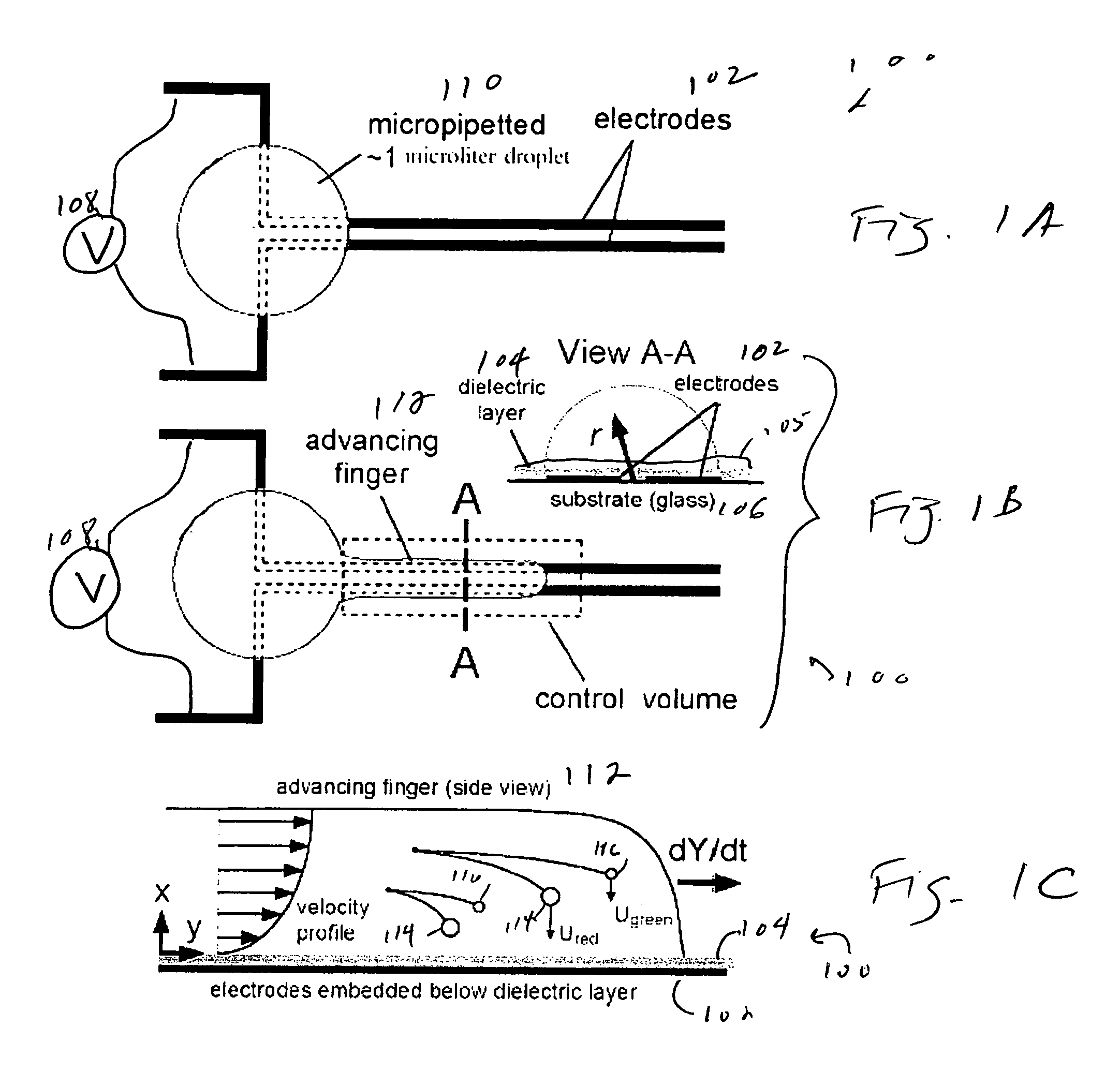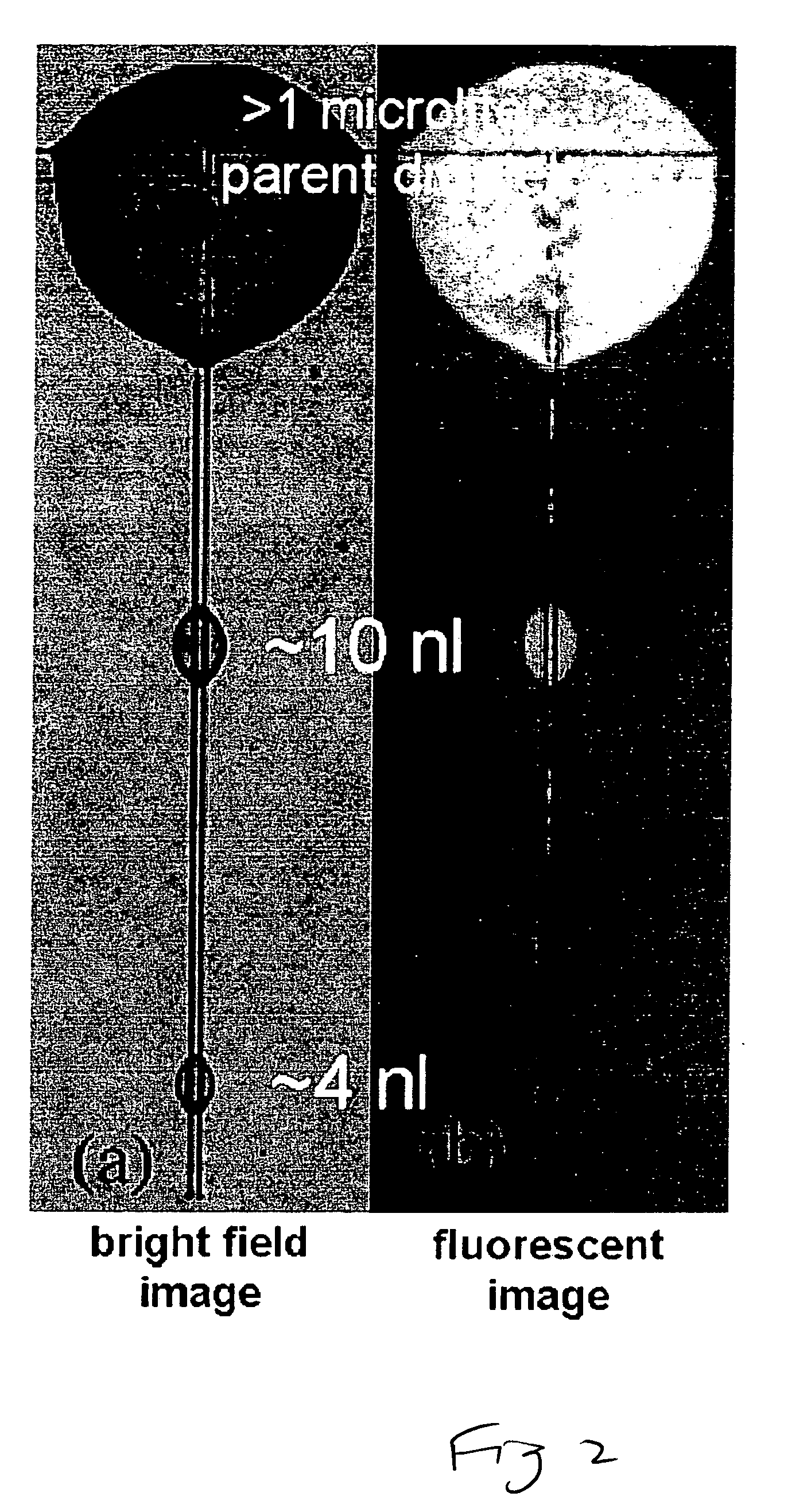Rapid flow fractionation of particles combining liquid and particulate dielectrophoresis
a technology of dielectrophoresis and fractionation, which is applied in the direction of fluid pressure measurement, liquid/fluent solid measurement, peptide measurement, etc., can solve the problem that force cannot be exploited
- Summary
- Abstract
- Description
- Claims
- Application Information
AI Technical Summary
Benefits of technology
Problems solved by technology
Method used
Image
Examples
Embodiment Construction
[0022]A preferred embodiment will be set forth in detail with reference to the drawings, in which like reference numerals refer to like elements throughout.
[0023]FIG. 1A shows the planar electrode structure 100 used in the experiments. The parallel electrode strips 102, patterned in 2 kÅ thick Al evaporatively deposited on borosilicate glass substrates 106, were of width w=20 μm, separation g=20 μm, and length=6 mm. These structures were spin-coated, first with ˜2 μm of SU-8™, an epoxy-based, dielectric material, to form a dielectric layer 104, and then with ˜0.5 μm of photoresist 105 (Shipley 1805) to control wetting. The electrodes 102 are connected to a voltage source 108.
[0024]To facilitate quantitative investigation of the separation effect, we suspended fluorescent-labeled, polystyrene microspheres (0.53 and 0.93 μm diameter, 0.06% by volume; Bangs Labs, Fishers, Ind.) in deionized water, adding nonionic surfactant to prevent particle aggregation (Tween 20, 0.1%-0.5% by volume...
PUM
| Property | Measurement | Unit |
|---|---|---|
| height | aaaaa | aaaaa |
| height | aaaaa | aaaaa |
| volumes | aaaaa | aaaaa |
Abstract
Description
Claims
Application Information
 Login to View More
Login to View More - R&D
- Intellectual Property
- Life Sciences
- Materials
- Tech Scout
- Unparalleled Data Quality
- Higher Quality Content
- 60% Fewer Hallucinations
Browse by: Latest US Patents, China's latest patents, Technical Efficacy Thesaurus, Application Domain, Technology Topic, Popular Technical Reports.
© 2025 PatSnap. All rights reserved.Legal|Privacy policy|Modern Slavery Act Transparency Statement|Sitemap|About US| Contact US: help@patsnap.com



